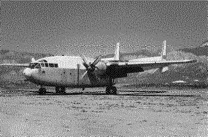Like what you see? Then be sure to visit the Allenspark Wind website here, and think about subscribing.

Read My Latest Column
Risks
Stephen Coonts is a Boulder author whose book, Flight of the Intruder, was based on his experience flying a Navy A-6 Intruder on bombing missions in North Vietnam. It became a movie and he made a pile of money. He spent some of it on a 1942 Stearman biplane and spent the summer of 1991 flying to the 48 states, mostly in hops of two hours or so, since a Stearman holds 46 gallons of gas and burns 12 gallons an hour.
Mr. Coonts wrote a book about his summer adventure and he dwelled at length on the sorry state of general aviation, brought on, he says, by the simple fact that a person who crashes a plane made in 1947 can nevertheless sue the manufacturer for design flaws and thereby become rich and incidentally bankrupt the manufacturer. He also goes into some detail about the many things he can’t do in his airplane because of the many restrictions put in place by the government: places he can’t fly, altitudes he can’t use. Flying, he says, is a risky business, and anyone who flies can’t expect to have all the risks removed. But we try, he says, just as we foolishly try to remove the risks from almost everything.
I have some sympathy with this point of view. How many things can you think of that you used to be able to do that are now illegal, ostensibly because they’re too risky?
In the mid-sixties I was finishing a Ph.D. at the University of Oregon. I was also flying as a navigator with a reserve troop carrier squadron of 16 C-119G aircraft out of Portland International. When the Vietnam war heated up, they called up the reserves several times to haul various things around the country. I made one flight to Goose Bay, and on another we hauled six thousand pounds of pillows to the troops in Puerto Rico.

The C-119 was called the Flying Boxcar, for obvious reasons. It was one of the largest twin-engine propeller-driven aircraft ever built: 110 feet wide, 87 feet long, and 20 feet high, powered by two 3,500 horsepower Wright R-3350-32W Turbo Cyclone engines. The four-blade propellers were the largest ever made by Hamilton Standard. It could carry 78 people or 28,000 pounds of cargo. Once a month we practiced dropping cargo or paratroops out of them, from an altitude of 1,000 feet, at Ft. Lewis, near Tacoma.
The plane was designed for the invasion of Japan, and it was used in Korea, but then was relegated to the reserves until Vietnam, when all of them were sent to serve briefly as gunships. They were slow and inefficient and were quickly replaced by C-130s. I’d be surprised to find a single C-119 flying today.
It was an odd and quirky plane. It was slow by modern standards: it cruised at about 200 mph. It had terrible single engine performance. One of our planes was taking a spare engine from Miami to Puerto Rico for another C-119; it lost an engine and was never heard from again. There was talk about the Bermuda Triangle, but the truth was a fully loaded C-119 on one engine had the flight characteristics of an anvil. Also, the high frequency radios hadn’t been maintained since the planes were built, so communication at long distance was impossible.
Fortunately, we rarely flew fully loaded or over water and on our trips around the country we took quite a few risks. We flew into the caldera of Crater Lake National Park in the dead of winter and skimmed the lake. We flew into the Grand Canyon. Once, on our way back to Portland, I took us into this, our valley, at low level, to show the crew my summer home. We probably scared the hell out of someone as we roared through Wind River Pass at 200 feet. You can’t do that any more; it’s against the rules. Too risky, for one thing.
Later, when I went to Southeast Asia, I flew in bigger, faster, safer airplanes and eventually accumulated 1,000 hours of combat flight time, which in itself was fairly risky, but I always had a soft spot for this big, ugly machine, which was always more or less a risk to fly.
Like the rest of government, the Air Force tries to make things less risky. The rules of flight used to be simple. When I started flying, the Air Force regulation about flight rules was about 15 pages. When I stopped flying, it was almost two inches thick. Nearly every new rule was the result of somebody doing something stupid which resulted, as we liked to say, in premature contact with the ground, or “buying the farm.”
All of life is a risk, of course, since nobody promised us tomorrow, and we certainly recognize that truth living here, as we have left many of the securities of city life behind. But how much is too much? Riding a motorcycle is risky, so I wear a helmet, but that doesn’t satisfy my mother, who regards this activity as much too risky, if not downright nuts, given my advanced age. The idiotic 55 mph speed limit, which nearly all of us ignore, is supposedly there to protect us. So are the rules against fireworks, open fires and undercooked hamburgers.
I never used to worry about cooking hamburgers. I drank the water out of the Roaring Fork. Now Crystal Spring is under constant threat of closure as the dark forces of Big Government tighten the rules and try to eliminate every possible risk. Keith Dever had to jump through expensive EPA hoops last summer even though there’s never been any evidence his gas storage tanks leak. And there are many more examples, right here in Allenspark.
How slippery a slope is this? Mr. Coonts complains that flying used to be fun, but now it’s mostly trying to avoid a violation, a big fine, and loss of license. He’s right, but the Risk Police have their fingers in many more pies than the one in the sky. How much risk will we avoid before life itself ceases to be fun?
Columns
© 1985 – 2003, David E. Steiner
Allenspark Wind Columns:
Back to the Hilltop Guild Bazaar
The Estes Park Hardware Store [1988]
On the Death of Otto Walter, Postmaster
A Whine About Telephone Service [1991]
On the Death of Charles Eagle Plume
Rumors About a Visit by the Pope
The Visit of Pope John Paul II
Devolutionizing Big Government
The Estes Park Trail-Gazette Columns:
How Old is Charles Eagle Plume?

